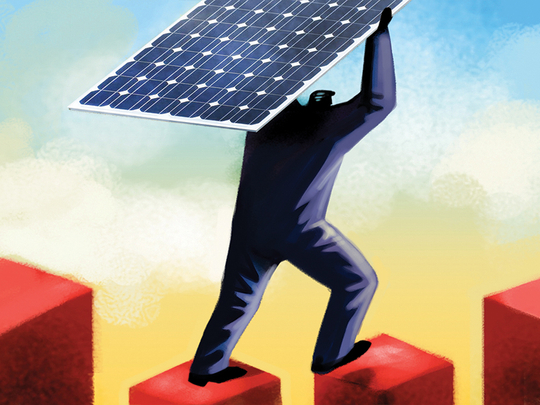
Indeed, the global community, and more specifically individual governments and corporations, must be encouraged to redouble their efforts to decarbonise their economies, to focus on further developing their Nationally Determined Contributions (NDC) and to implement them.
Government and business strategies go hand-in-hand and both have a role to play in reducing the Green House Gas (GHG) emissions that contribute to global warming. The stakes are high and each sector needs to play an active role.
Individual governments should not wait for new global agreements, and corporations should not wait for signals from governments.
According to the latest edition of World Energy Scenarios, global demand for electricity will double by 2060.
Meeting this demand with cleaner energy sources will require substantial infrastructure investments and systems integration to deliver benefits to both consumers and the environment.
Fortunately, World Energy Scenarios says that much of this growth will be supplied by non-fossil energy sources such as solar and wind, driven by the steep reductions in the cost of renewable technology.
Solar and wind energy accounted for only 4% of power generation in 2014, but by 2060 it could represent between 20% and 39%.
This is a very wide range and the final outcome will depend on the decisions taken by governments and corporations over the coming decades.
Market, competition
While lifestyles and economies demand more energy, efficiency gains will keep consumption growth moderate.
World Energy Scenarios suggests that the optimum results will come from those societies that allow a competitive economy shaped by market mechanisms that allow technological innovation to thrive.
In this scenario, the continued penetration of digital technologies leads to new markets across industries, driving strong productivity gains and strong economic growth. Consumers, not governments, are expected to drive the penetration of both renewables and natural gas. For their part, governments will support the transition by promoting the creation of market structures that result in liquid power markets and increased distributed energy backed by the rising liquid natural gas (LNG) trade.
These are, of course, scenarios; they are not forecasts. The future will be determined by choices made by governments and corporations. The key tools for enabling change are state directives and markets. All states have a mixture of both. Even strong market economies like the USA have a wide range of regulations — for example, anti-trust policies and environmental standards.
In the current debate on the environmental and social factors shaping energy policy, there is a clear difference between those who take a socio-political perspective and those who see choice as predominantly a techno-economic matter.
Each perspective includes two very distinct and coherent bodies of tools. One focuses on taxes and subsidies and on the state’s role in research, regulation, education, national planning, state-run companies and public investment. In contrast, the markets-focused perspective is concerned with competition, corporate vision and planning, private investment in R&D, innovation and training.
A set of public-private enterprises is emerging, but such organisations remain limited. The important point is that governments and corporations face choices. With so much at stake, not making a choice is not an option.
Fortunately, the UAE is showing leadership with a range of policies as outlined in its NDC contribution. Abu Dhabi Sustainability Week from January 12-21 will be an opportunity for other countries and corporations to showcase their commitments.
— Marie-José Nadeau, Honorary Chair of the World Energy Council.









